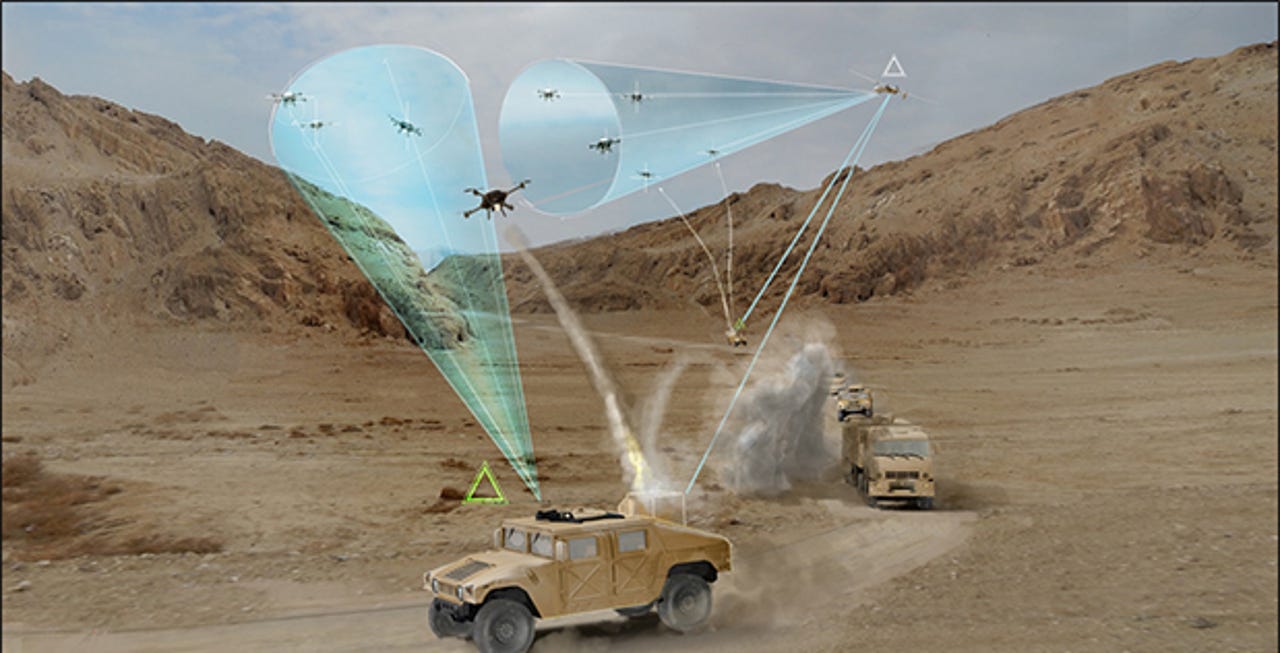Think you can take out a swarm of attack drones? DARPA wants to hear from you


DARPA is exploring how to defend against a swarm of attack drones.
DARPA is already developing concepts for a swarm of drones to drop out of aircraft, and has drones that can fly at 45mph.
Now, in its never-ending quest to close capability gaps, the Pentagon's advanced research agency wants to develop a defensive system that can take out an attacking fleet of small unmanned air systems (sUAS).
In a new request for information, DARPA outlined its concerns about the impact of commercial drone technology on defense capabilities, particularly the protection of large and dispersed ground and naval forces where conventional weapons, such as missiles, might not be as effective in future.
Responding to this threat, the agency wants a new technology that can rapidly "detect, identify, track, and neutralize" a potential attack from such drones.
"The rapid evolution of small unmanned air systems (sUAS) technologies is fueling the exponential growth of the commercial drone sector, creating new asymmetric threats for warfighters," DARPA notes.
DARPA, or the Defense Advanced Research Projects Agency, believes cheap, tiny drone tech presents new challenges to defense systems that protect fixed and mobile ground and naval forces.
For the envisaged system to have any deterrent effect, DARPA believes it must be capable of being widely deployed to protect a large number of assets.
"These emerging irregular systems and concepts of operations in diverse environments require technology advancements to quickly detect, identify, track, and neutralize sUASs while mitigating collateral damage and providing flexibility to operations in multiple mission environments," DARPA says.
The system would also ideally address rocket, artillery, mortar, and other conventional threats.
Jean-Charles Ledé, a program manager in DARPA's Tactical Technology Office, hopes the initiative will lead to a scalable and affordable approach within the next four years.
"DARPA is interested in identifying novel, flexible, and mobile layered defense systems and component technologies to address this increasingly important issue as well as conventional threats," Ledé said.
Anyone with a proposal for such as system will need to provide a response to DARPA's request by August 26.
DARPA earlier this year kicked off its Gremlins program, under which several aerospace firms will be producing technology to launch swarms of cheap drones from an aircraft for brief missions before returning to a carrier aircraft. The program aims to develop distributed airborne capabilities.
Read more about DARPA
- Georgia Tech awarded DARPA grant to develop new IoT protection
- Organs on chips: The DARPA-backed project mimicking the human body on a tiny scale
- US military agency DARPA: We want biometric tech to ID individual hackers
- DARPA: We'll pay you up to $130k to turn fridges and vacuums into deadly weapons
- DARPA seeks "non-traditional" robotics innovators
- DARPA develops disappearing delivery drones for emergencies
- Photos: 12 insane tech projects DARPA is working on (TechRepublic)
- DARPA wants to engineer fake bacteria to patrol the human gut (CNET)